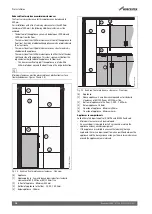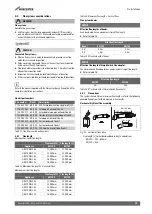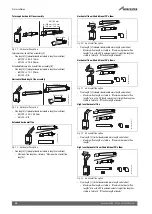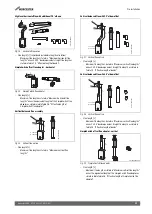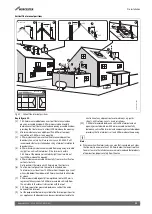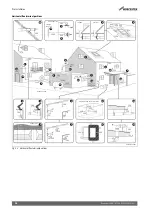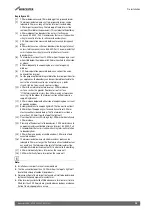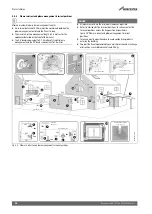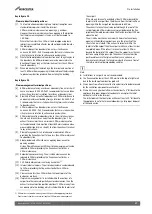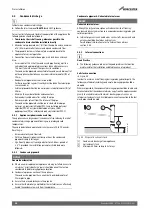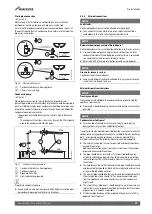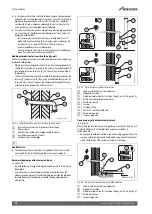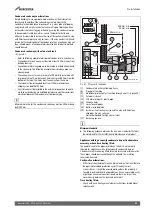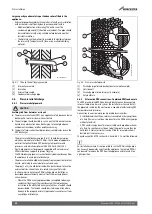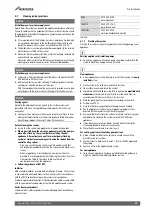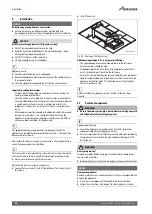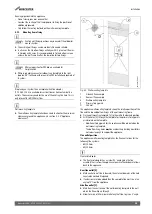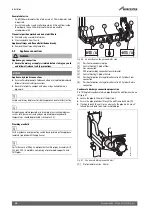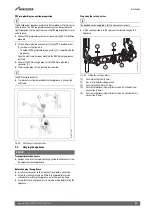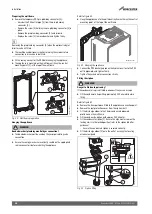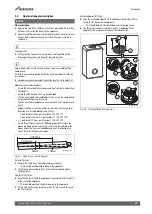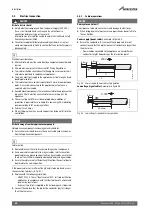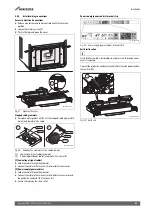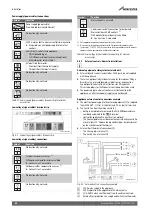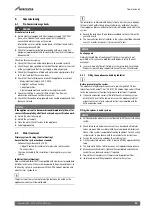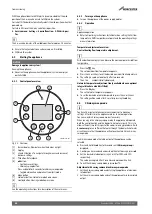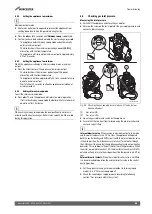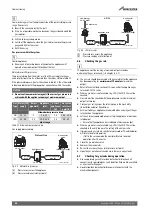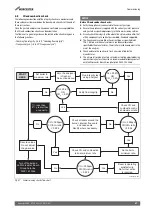
Pre-Installation
Greenstar 4000 – 6 720 891 162 (2020/09)
32
Large capacity condensate trap or CondenseSure fitted to the
appliance:
• External pipework exceeding three metres in length or an installation
with increased risk of freezing due to environmental factors:
– Additional protection of insulating the entire run of the
condensate pipework [2] should be carried out. The pipe should
be insulated externally using suitable waterproof and weather
resistant insulation.
– The hole through the wall must be sealed to the building fabric on
the internal [1] and external [3] face using a suitable building
material.
Fig. 42 Through the wall lagging example
[1]
Internal face sealed
[2]
Insulation
[3]
External face sealed
[4]
Condensate discharge pipe
4.6
Pressure relief discharge
4.6.1
Pressure relief pipework
CAUTION
Scalding risk from hot water or steam!
▶ The pressure relief valve (PRV) is an appliance safety device and may
discharge hot water or steam when activated.
▶ The outlet pipe should be sited in such a way that it does not cause a
hazard or an obstruction when discharging, for example above a
window, entrance door or other public access way.
▶ The point of termination should provide a visual indicator in case the
PRV discharges.
• The pressure relief discharge pipe [1 or 3] should be run in pipe
which has a diameter of at least 15mm, that is made of copper or a
material that will withstand PRV discharge temperatures and
pressures, and which complies with BS 5254 or BS EN 1451.
• Plastic pipework must be properly supported with a maximum of
300mm between supports to prevent sagging.
• The PRV discharge pipe must run continuously downwards away from
the appliance to a safe point of discharge.
• The pressure relief should discharge away from any electrical or other
hazard, preferably to an external drain or soak-away.
• The pipe [1 or 3] should be finished with a partial bend, to face the
external wall (as shown) to ensure safe discharge of hot water.
• In all normal circumstances a PRV discharge pipe installation as
described above sufficiently meets all but the most exceptional
circumstances.
– Where the PRV discharge pipe could be susceptible to damage,
vandalism, freezing etc that could cause either a blockage or
restriction in the ability to discharge safely then a tundish should
be considered. The tundish should be sited in a position where
damage to the property or injury to occupants cannot occur from
any spillage or discharge.
Fig. 43 Pressure relief pipework
[1]
Discharge pipe (turned back onto external wall example)
[2]
Outside wall
[3]
Discharge pipe (into drain or gully example)
[4]
External drain
4.6.2
Alternative PRV connections - Combined PRV/condensate
The PRV or a combined PRV/condensate discharge can be connected
into a suitable internal waste system, the installer must ensure that all
the pipework, including the waste pipe, is capable of withstanding PRV
temperatures and pressures.
Connection to a waste water pipe is possible by using either:
• A shielded tundish with non-return valve used to discharge upstream
of a trap (there must not be a trap directly in the PRV discharge pipe
without a tundish).
• A PRV can discharge directly into a suitable waste pipe downstream
of a trap. Connections must be on top of the pipe to ensure they do
not block. A Hotun (or similar) can be fitted for visual indication if
desired but is not necessary.
The guidance of BS 6798 sections 6.3.5 and 6.4.3.2a must be followed.
For installations where it is not possible to run the PRV discharge pipe
continuously downwards away from the appliance, the remote PRV kit
can be used to remove the PRV from the appliance and relocate it to a
higher position.
0010036808-001
1
2
3
4
1
2
3
4
2
3
4
1
2
6720818077-38.1W
o

